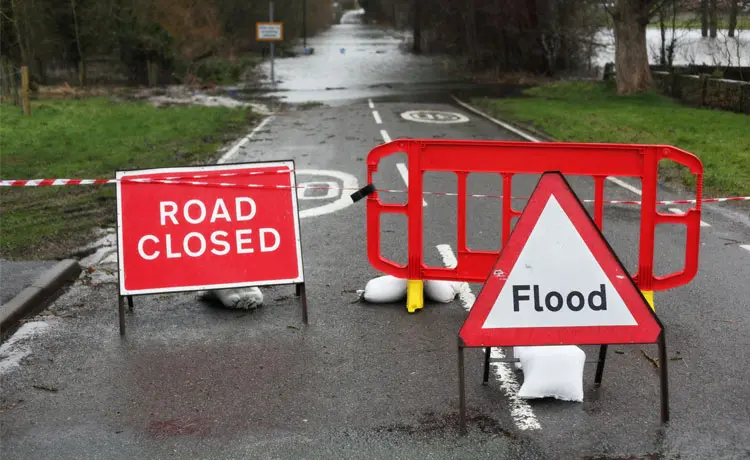Floods - they're the number one natural disaster in the U.S. Every year, floods pose a country-wide threat due to their often devastating consequences. Floods can destroy buildings and houses, wash out farmland, contaminate drinking water, spread diseases and cause death. They can develop slowly from heavy rainfall, in a warming trend following a heavy snow or quite suddenly as flash floods without any visible sign of rain.
This spring, encourage citizens to learn about flood hazards and the safety measures they can take to make sure their homes, families and communities are protected in the event of a flood.
Know Your Flood Risk
- Do you live in a flood risk area? While you may think you're safe, find out for sure. Identify flood or landslide-prone areas near you. These can be low-lying locations and areas near water or downstream from a dam. Find the flood map where you live using FEMA’s Flood Map Service Center.
Make a Plan
- Know your community’s warning signals, evacuation routes and emergency shelter locations.
- Make a flood emergency plan for the relevant type of local flood risk that includes evacuation, shelter and locations for high ground.
- Build or restock your emergency preparedness kit. Include a minimum of three days of food and water, flashlight, batteries, cash and first aid supplies.
- Consider flood insurance. Most homeowner’s insurance policies don’t cover what could be thousands of dollars of your hard-earned money in flood damages, so consider the benefits of getting flood insurance. Learn more about the National Flood Insurance Program or call the NFIP’s Referral Call Center at 888-379-9531 to find out more.
In the event of a flood...
- Unplug appliances so you don't get an electrical shock when the power comes back on.
- Turn off the gas, power and water if water is in your home, power lines are down and before you evacuate.
- Don’t drive or walk through flood waters. Six inches of moving water can knock you down, and one foot of moving water can sweep your vehicle away.
- Don’t drive over bridges that cross fast-moving floodwaters. Floodwaters can scour foundation material from around the footings and make the bridge unstable.
- If floodwaters rise around your car but the water is not moving, abandon the car and move to higher ground. Don’t leave the car and enter moving water.
- If there is a chance of flash flooding, move immediately to higher ground.
- Avoid camping or parking along streams, rivers and creeks during heavy rainfall. These areas can flood quickly with little warning.
